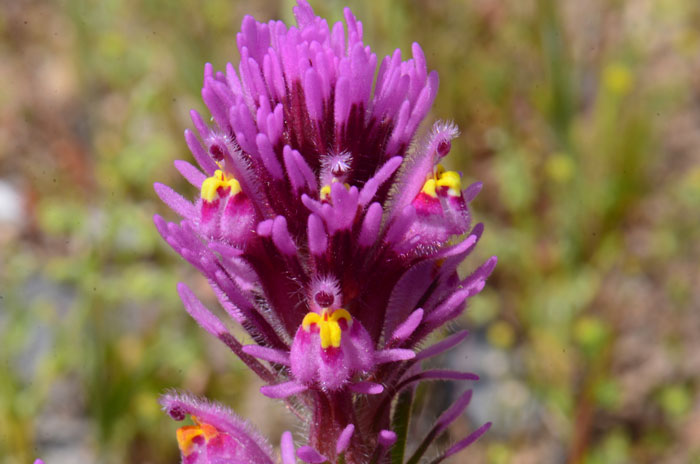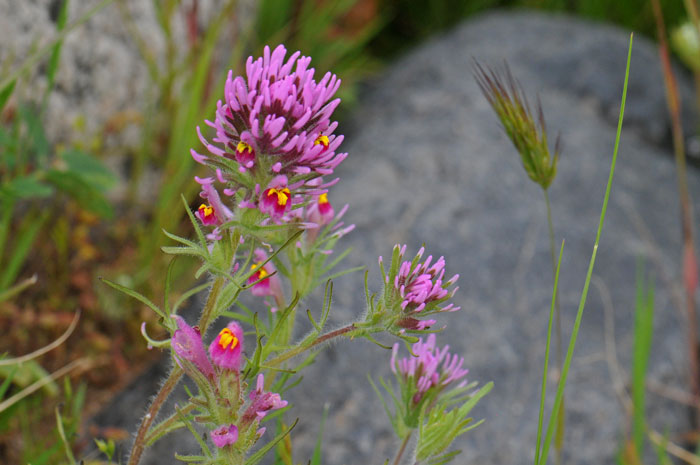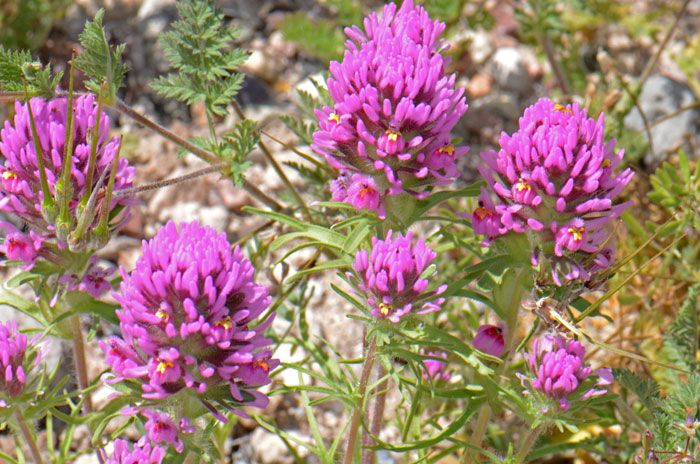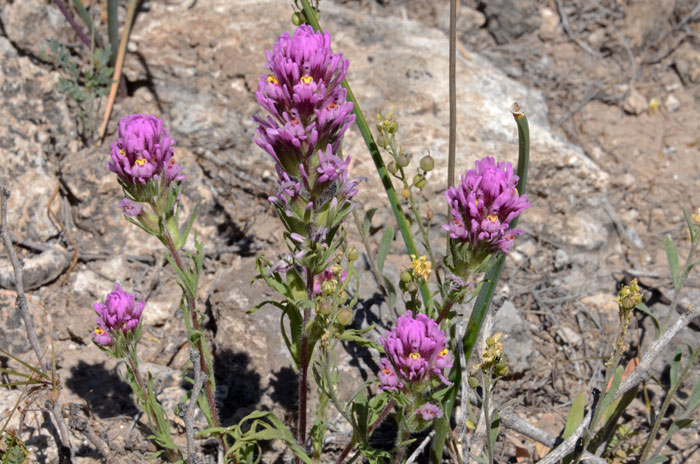Castilleja exserta, Exserted Indian Paintbrush




Scientific Name: Castilleja exserta
Common Name: Exserted Indian Paintbrush
Also Called: Indian Paintbrush, Purple Owl Clover (Spanish: Escobita)
Family: Scrophulariaceae, Figwort or Snapdragon Family - Moving to Orobanchaceae
Synonyms: (Orthocarpus purpurascens, Orthocarpus purpurascens var. latifolius, Orthocarpus purpurascens var. ornatus, Orthocarpus purpurascens var. venustus)
Status: Native
Duration: Annual.
Size: Up to 15 inches more or less.
Growth Form: Forb/herb; glandular hair; erect.
Leaves: Green; lobes, very narrowly lanceolate.
Flower Color: Rose with yellow and white, purple, purplish-red; flowers in clusters with 5 to 9 linear lobes
Flowering Season: March to May.
Elevation: 1,500 to 4,500 feet.
Habitat Preferences: Open mesas, fields, grassland and slopes.
Recorded Range: Exserted Indian Paintbrush is found in the southwestern United States in AZ, CA, NM. This species is also native to Baja California. In Arizona it is found in the central, southern and northwest parts of the state.
Sub-species "latifolia" and "venusta" are rare in the United States where they are found only in California.
North America & US County Distribution Map for Castilleja exserta.
U.S. Weed Information: No information available.
Invasive/Noxious Weed Information: No information available.
Wetland Indicator: No information available.
Threatened/Endangered Information: No information available.
In the Southwestern United States, Arizona there are 16 species of Castilleja, in California there are 36 species, Nevada has 20 species, New Mexico has 21 species, Texas has 09 species, Utah has 15 species. All data is approximate and subject to taxonomic changes.
There are 3 subsp. in Castilleja exserta;
Castilleja exserta subsp. exserta, Exserted Indian Paintbrush, (AZ, CA, NM);
Castilleja exserta subsp. latifolia, Wideleaf Indian Paintbrush, (CA);
Castilleja exserta subsp. venusta, Exserted Indian Paintbrush (CA).
Comments: Exserted Indian Paintbrush was formerly included in the genus Orthocarpus. With good winter rainfall this species is an amazing bloomer and may carpet an area for hundreds of feet or more.
In Southwestern Desert Flora also see Wholeleaf Indian Paintbrush, Castilleja integra.

